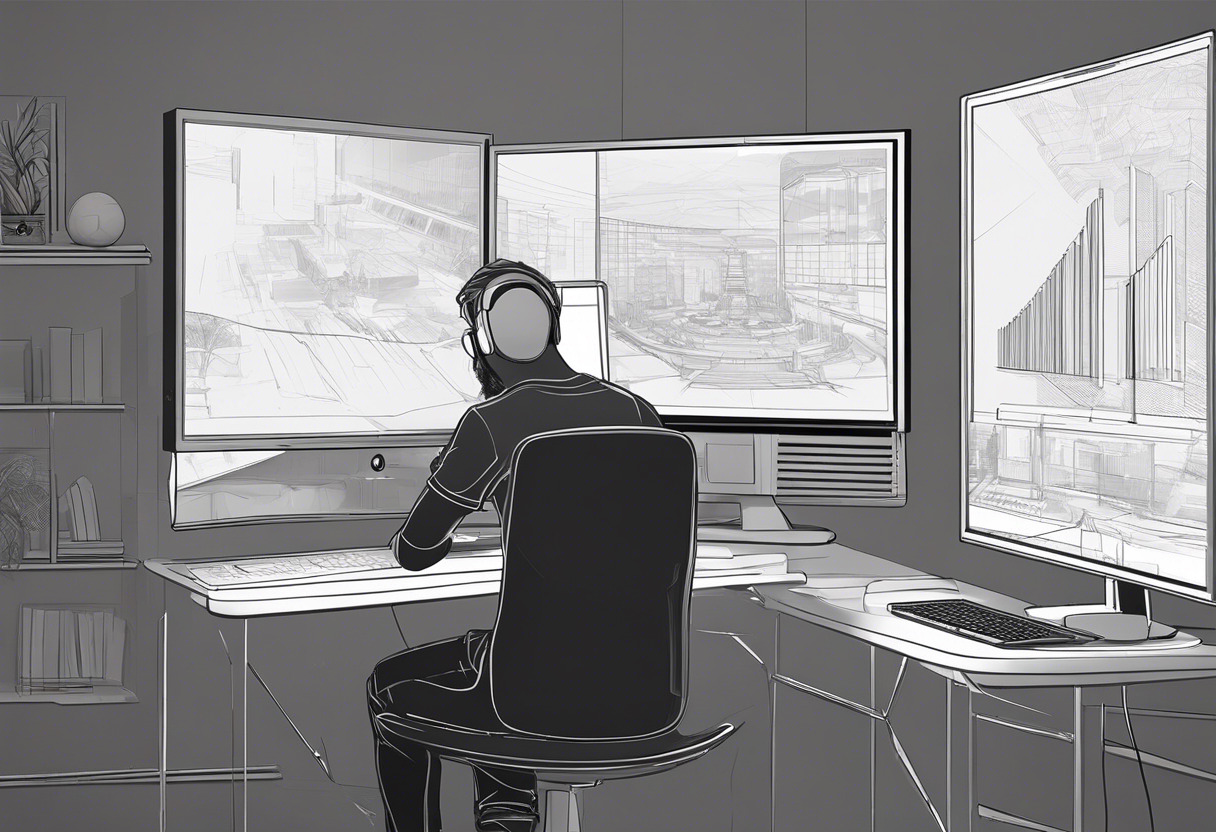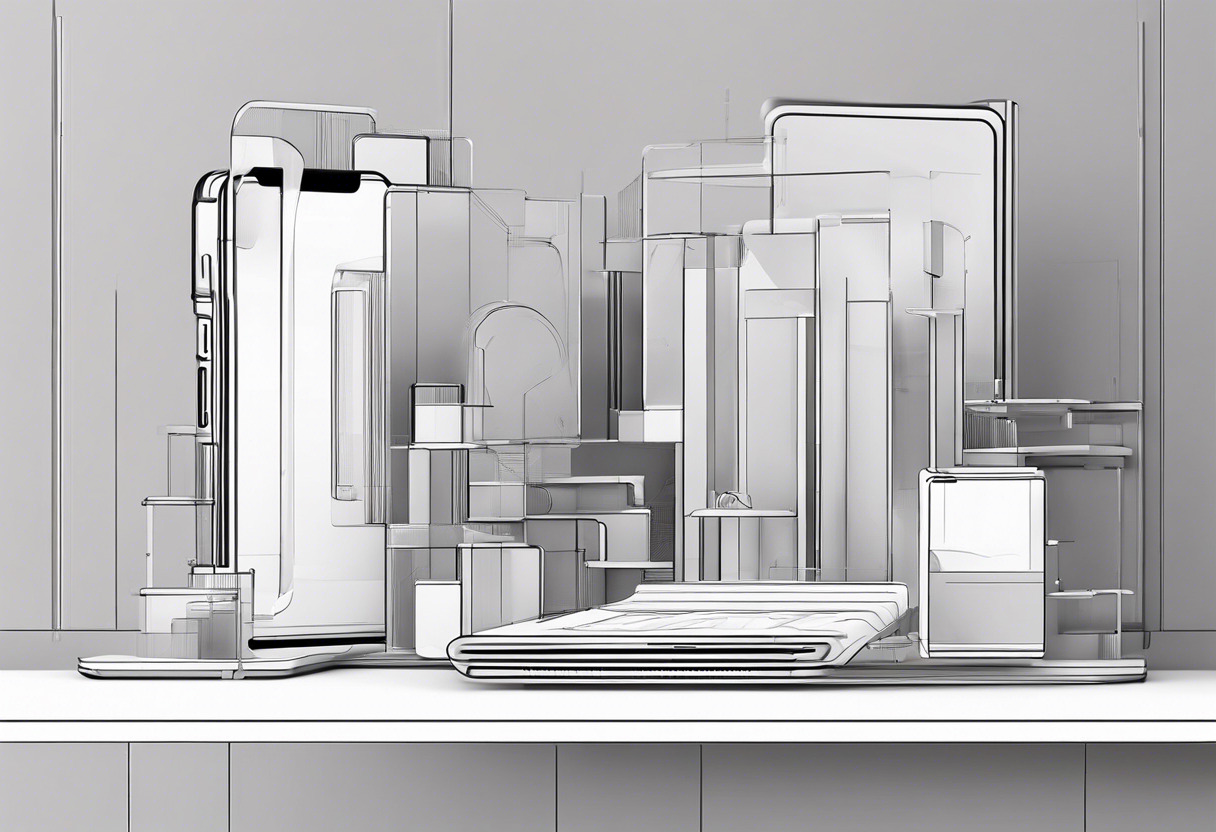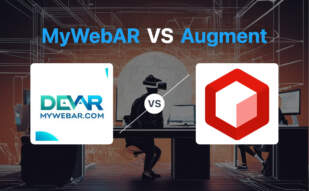For AR enthusiasts, choosing between Vuforia and Augment largely depends on their needs. Vuforia, with its advanced object recognition and extensive compatibility, is ideal for complex AR applications. Augment, with emphasis on augmenting real-world experiences, is perfect for interactive marketing campaigns and product visualizations.

Key Differences Between Vuforia and Augment
- Coding: Vuforia supports APIs in C++, Java, Objective-C++, and .NET languages for the Unity game engine. Augment requires hardware components for AR systems.
- Support: Vuforia’s AR engine offers cloud add-ons for increased Cloud Recognition limits. Augment focuses on augmenting user’s experiences in the real world.
- Compatibility: Vuforia is compatible with iOS, Android, UWP, and AR headsets/glasses like HoloLens and Magic Leap. Augment can be delivered through smartphones, tablets, glasses, and is developing AR contact lenses.
- Features: Vuforia enables real-time detection and overlays data on real-world objects. Augment provides an interactive experience, overlaying digital information onto real-life environments.
| Comparison | Vuforia | Augmented Reality |
|---|---|---|
| Type | AR SDK | AR Technology |
| Focus | AR Digital Twin, bridging physical and digital spaces | Enhances the real world with generated perceptual information |
| Applications | 3D product demonstrations, interactive campaigns | Promote products/services, launch marketing campaigns, healthcare, retail, training |
| Platforms | Unity, Android Studio, Visual Studio, XCode | Delivered through smartphones, tablets, glasses |
| APIs | C++, Java, Objective-C++, .NET languages for Unity game engine | Depends on the specific AR system being used |
| Compatibility | iOS, Android, UWP, Windows 10. AR headsets/glasses | Depends on the AR system, but generally smartphones, tablets, glasses |
| Key Features | VuMarks, dynamic recognition, targetting options | Visual, auditory, or other sensory information overlay onto real world |
| Licensing | Develop (free), Basic, Basic with Cloud License, Pro | Depends on the specific AR system, varies |
| Major Releases | Latest versions (10.18) with bug fixes, performance improvements | Varies depending on the AR system |
| Plan Structure | Basic Plan, Premium Plan, Cloud Add-Ons | Depends on the particular AR system |
What Is Vuforia and Who’s It For?
Vuforia is an AR software development kit (SDK) originally created by Qualcomm. Acquired by PTC Inc. in 2015, this advanced technology centers on computer vision for object recognition, allowing for the creation of innovative AR applications. It supports 2D/3D target types, markerless Image Targets, 3D Model Targets, and addressable Fiducial Markers known as VuMarks. A prime choice for 800k+ developers, it caters to those seeking to develop applications like 3D product demonstrations and interactive campaigns.
Vuforia features a wide range of APIs in C++, Java, Objective-C++, and .NET languages for Unity game engine. It’s designed for compatibility with iOS, Android, and UWP. With a focus on AR Digital Twin tech, it’s geared towards developers eager to bridge physical and digital spaces. With compatibility for systems such as Unity, Android Studio, Visual Studio, and XCode, Vuforia emerges as a solution for both tech professionals and hobbyists.

Pros of Vuforia
- Array of features: 2D/3D target support, markerless Image Targets, 3D Model Targets, VuMarks
- Robust compatibility: iOS, Android, UWP, Unity, Android Studio, Visual Studio, XCode
- Supports AR headsets/glasses: HoloLens 1, Microsoft HoloLens 2, Magic Leap, RealWear HMT-1, Vuzix M400
- Multiple plan options: Basic, Premium, Cloud/Cloud Plus add-ons
Cons of Vuforia
- Virtual Buttons feature is deprecated and set to be removed in future versions
- Cloud add-ons not available in China
- Premium plan cancellation requires contact with company
What Is Augmented Reality and Who’s It For?
Augmented Reality (AR) is a revolutionary technology that enhances the real world with digital visual, sound or other sensory stimuli. Its primary objective is to highlight specific features of the physical world, increasing understanding and deriving smart, accessible insights for real-world applications. The architectural enhancement, applied in sectors such as mobile computing, retail, healthcare, and entertainment, caters to marketers, educators, trainers, architects, and manufacturers.
In contrast to VR, AR adds to the existing world instead of creating a wholly separate environment. Its operational virtue is the overlay of computer-generated visuals on real-world scenarios, enhancing user’s overall experience. AR equips everything from store catalog apps, allowing consumers to visualize products, to medical training incorporation, enabling 3D viewing of body systems.

Pros of Augmented Reality
- Broad application: gaming, product visualization, marketing, architecture, education, manufacturing
- Enhanced collaboration and safer work conditions
- Improves brand awareness and boost sales
- Integration into existing world, doesn’t replace real environment like VR
Cons of Augmented Reality
- Dependent on hardware: processor, sensors, display and input devices
- Further development needed for widespread use of AR glasses and AR contact lenses
Vuforia vs Augment: Pricing
Vuforia offers versatile plan options including free, basic, and premium tiers, while Augment does not provide explicit pricing information.
Vuforia
Vuforia grants pricing tiers, tailored to fit different needs: Develop (free, for learning and non-commercial use), Basic, Basic with Cloud License, and Pro. The Basic Plan allows for endless app development and publishing without a watermark, however it’s limited to targeted features. The Premium Plan offers unlimited operation with Model Targets, Area Targets and Barcode Scanner watermark-free. Basic and Premium plans can be further boosted with Cloud and Cloud Plus add-ons for increased Cloud Recognition limits. Overages with Cloud add-ons cost $0.01/Cloud recognition. In terms of contract, one can cancel Basic/add-ons plans anytime, but termination of the Premium plan necessitates a company contact.
Augment
Augment’s pricing continually changes. It’s a bit all of the place, so much so, we’d be doing you a wrong by listing it here.
Viability Verdict: Vuforia vs Augment
With our in-depth analysis of Vuforia and Augment, it’s time to deliver the final verdict. Which is the superior choice? As with most tech dilemmas, the answer hinges on your specific needs.
AR/VR Developers and Game Makers
Vuforia, with its dynamic recognition, targetting options and extensive compatibility, comes as a robust choice for tech-savvy developers. Its integration with Unity further amplifies the appeal. VuMark, presenting as a next-gen QR code, could be a game-changer for innovative game design.

Tech Enthusiasts & Tinkerers
On the other hand, Augment delivers as an accessible, versatile AR solution for tech enthusiasts. It doesn’t demand deep technical proficiency, making it a solid platform for anyone looking to expand their tech horizons.

Enterprise & Industrial Users
For enterprise and industrial users contemplating an AR initiative, Vuforia is the pick with its superior object recognition. It also excels with a focus on AR Digital Twin technology. Additionally, it supports various AR headsets, ensuring seamless integration for industrial tasks.

AR in Retail & Marketing
In the realms of retail and marketing, Augment pushes the boundaries. Its ability to overlay digital information on real-world environments promises to enhance consumer interaction and ultimately, drive sales.

In the battle of Vuforia vs Augment, your needs dictate the winner. For developing robust AR apps or games, choose Vuforia. For a user-friendly dive into augmented experiences or if you’re in retail, pick Augment. As always, your mileage will vary with either kit.
Tiffany Brise
Content writer @ Aircada, patiently awaiting a consumer AR headset that doesn’t suck.





